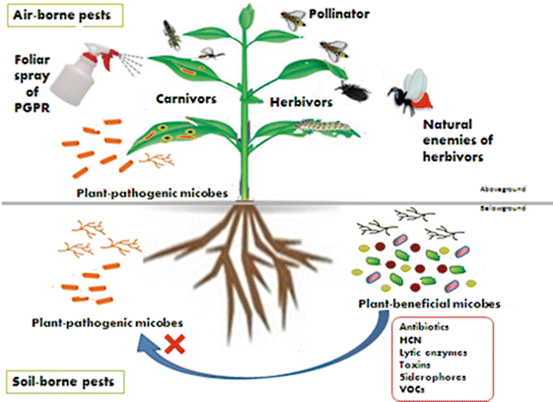

is a potent elicitor of defense responses in tomato and Arabidopsis ( Felix et al., 1999). Bacilysin, which is produced and excreted by many Bacillus, is a dipeptide antibiotic that resists pathogens, Staphylococcus aureus and Candida albicans ( Yazgan et al., 2001). Lipopeptides are also involved in induction of resistance in plant systems ( Ongena et al., 2007).

Based on chemical structure, lipopeptides have been divided into three major families: iturin, surfactin, and fengycin ( Bonmatin et al., 2003). Lipopeptide antibiotics are a class of major antagonists produced by Bacillus. could produce many secondary metabolites to inhibit pathogen infection in host ( Kilian et al., 2000). Previous studies indicate that Bacillus spp.

brassicae with 76.9% control efficiency, and produces eight homologs of fengycin, seven homologs of dehydroxyfengycin, and six unknown fengycin-type cyclopeptides to destroy the cell wall integrity of the resting spores ( Li et al., 2012). subtilis XF-1 exhibits a good suppression effect on P. antibioticus cell-free culture filtrate reduced clubroot by 74.6% in greenhouse experiments ( Zhou et al., 2014). Trichoderma can effectively prevent clubroot disease after mixing into an organic fertilizer containing actinomycetes ( Joo et al., 2004). In recent decades, some antagonistic microorganisms have been identified as biological control agents (BCAs) for clubroot disease, including Trichoderma spp., Bacillus subtilis, Bacillus Amyloliquefaciens, and Lysobacter antibioticus ( Cheah et al., 2000 Li et al., 2013 Zhou et al., 2014). The mature secondary plasmodia of root cortex can form many resting spores that are released into soil ( Schwelm et al., 2015).īiocontrol with microbial antagonists has emerged as a promising alternative treatment with low environmental impact to reduce the use of synthetic fungicides. Life cycle of the pathogen consists of two key phases: in the initial phase, resting spores penetrate root hairs and epidermal cells and then form primary plasmodia in the second phase, primary plasmodia release secondary zoospores, which then penetrate the root cortex and form galls.

#Biocontrol agents antibiotics cracked
The enlarged roots become cracked and then rotten due to infection by other pathogens and saprophytes. After rapeseed roots become infected, root cells proliferate abnormally, forming tumor-like bulges. Recently, clubroot disease has been increasing annually in Chongqing, Sichuan, Yunnan, and Hubei provinces and other major rapeseed-producing areas in China ( Huang, 2010), and become the main disease on rapeseed. velezensis as a biocontrol agent against clubroot disease.Ĭlubroot, caused by soil-borne obligate parasite Plasmodiophora brassicae, is a serious disease on Brassica spp., especially oil-seed crops, and causes severe yield losses worldwide ( Dixon and Page, 1998). To our knowledge, this is the first report of B. Genome analysis, PCR and RT-PCR detection revealed that both F85 and T113 harbor various antibiotic biosynthesis gene clusters required to form peptides with antimicrobial activity. Based on sequence analysis of 16S rDNA gene, gyrA gene and 22 housekeeping genes as well as carbon source utilization analysis, the F85 was identified as Bacillus velezensis and T113 as Bacillus amyloliquefaciens. brassicae, and inhibit formation of secondary zoosporangia. Root hair infection experiments showed that F85 and T113 can inhibit early infection of root hairs, reduce the differentiation of primary plasmodia of P. Finally, eight of the antagonistic strains were found to significantly reduce the disease severity of clubroot by more than 40% under greenhouse conditions, and two strains, F85 and T113, were found to have efficacy of more than 80%. These were then further screened in germination inhibition and viability assays of resting spores of P. Antagonistic strains were first identified based on dual culture inhibition zones with Fusarium oxysporum and Magnaporthe oryzae. napus in Dangyang county, Hubei province, China. In this study, 323 bacterial strains were isolated from the rhizosphere of severely diseased B.


 0 kommentar(er)
0 kommentar(er)
